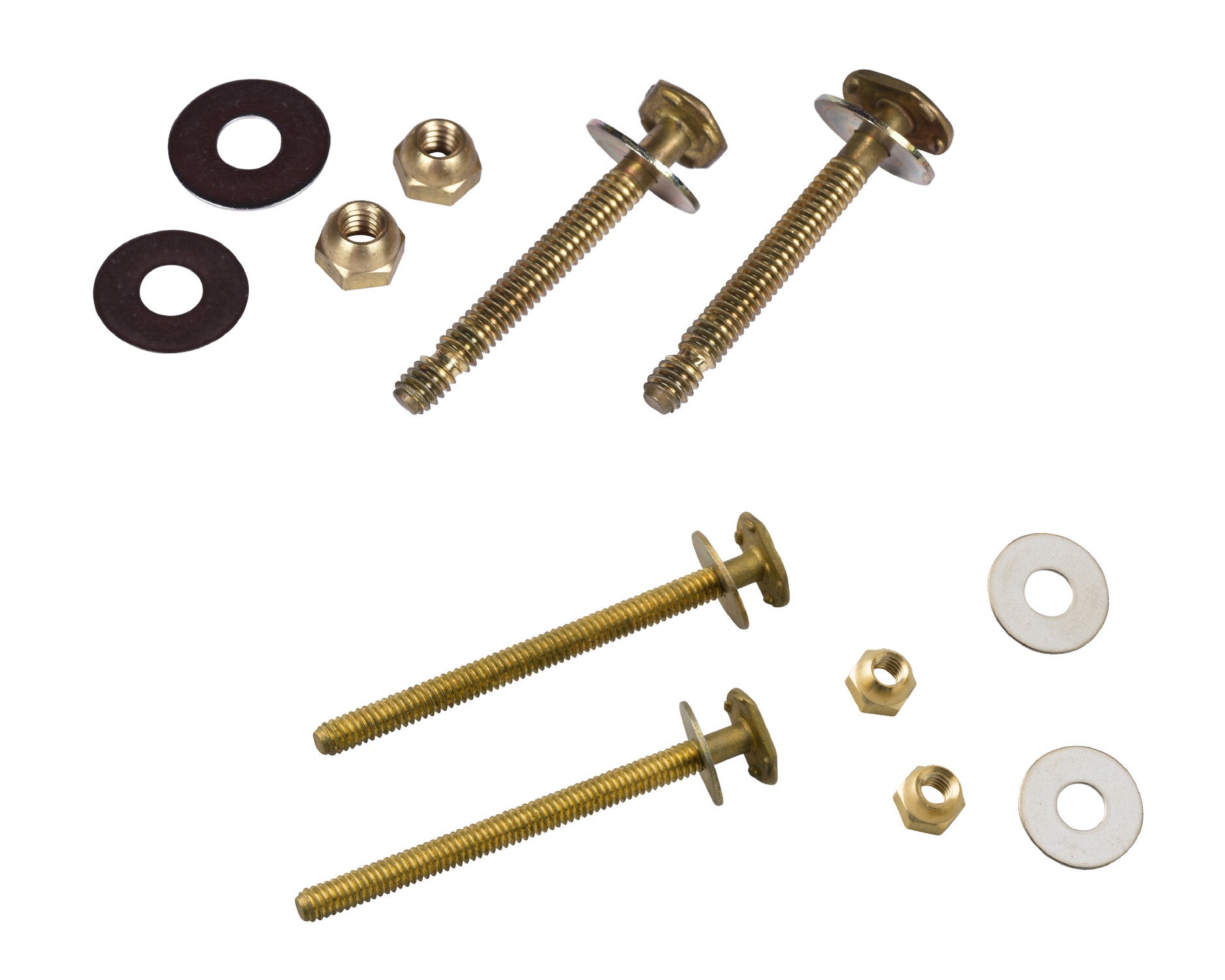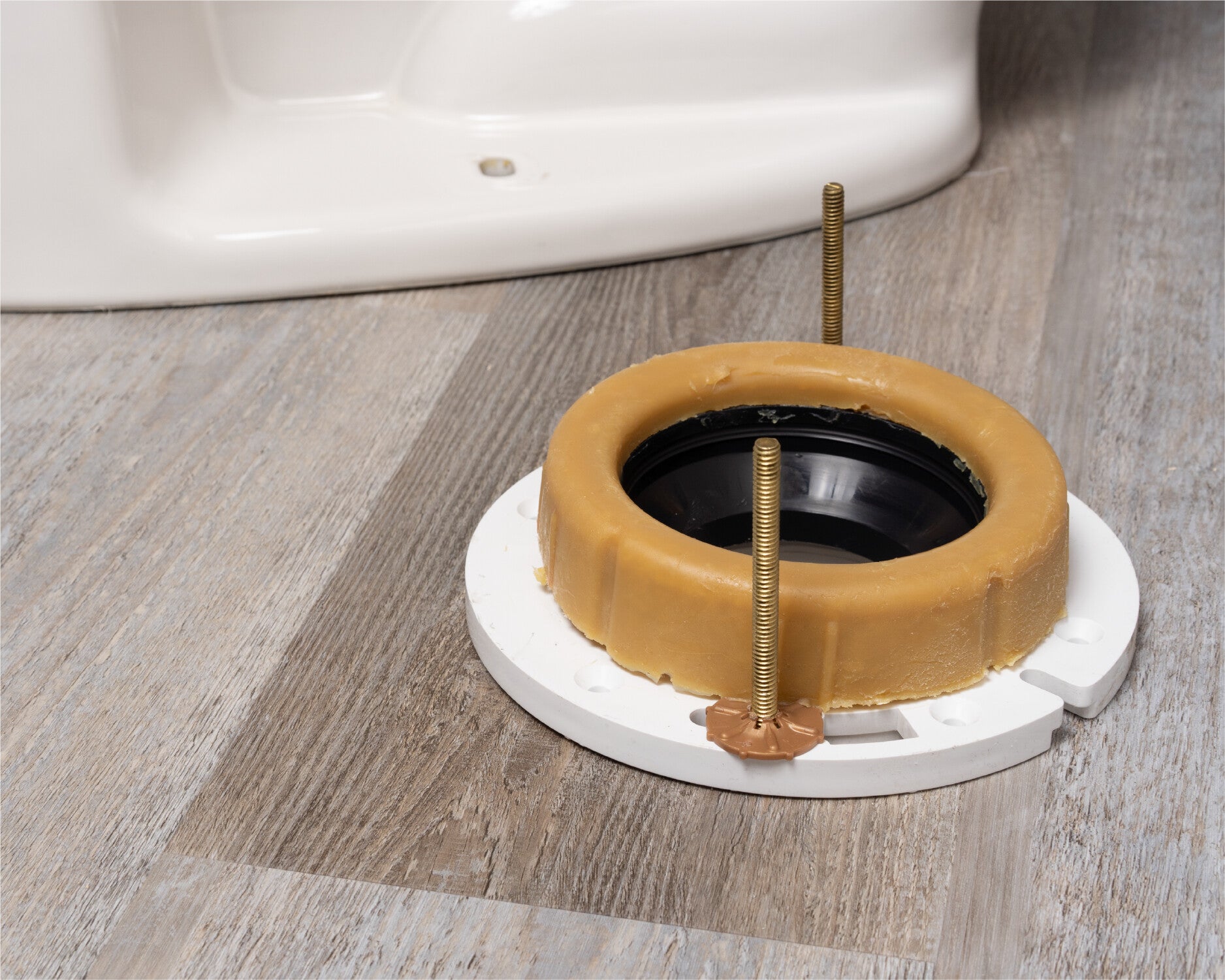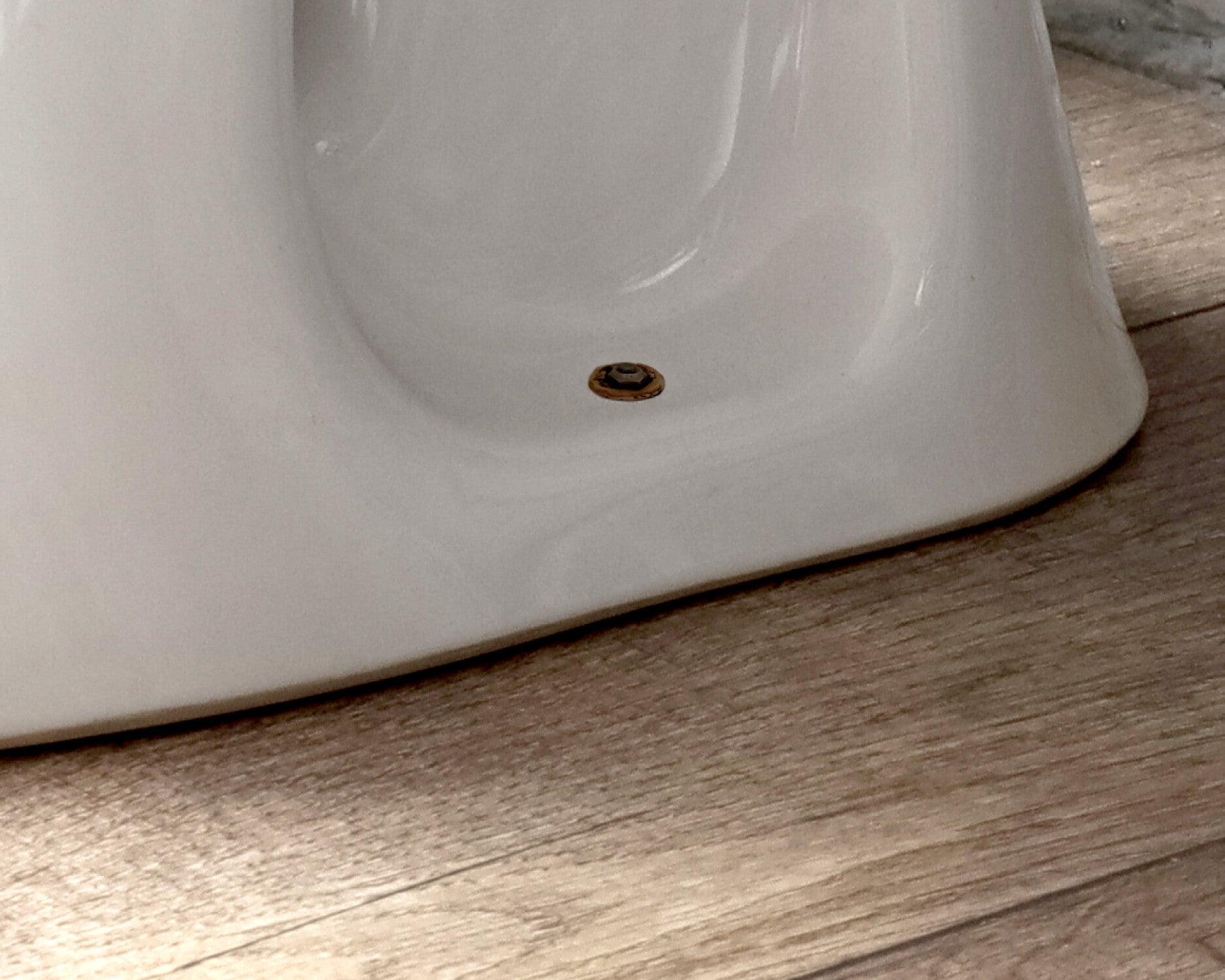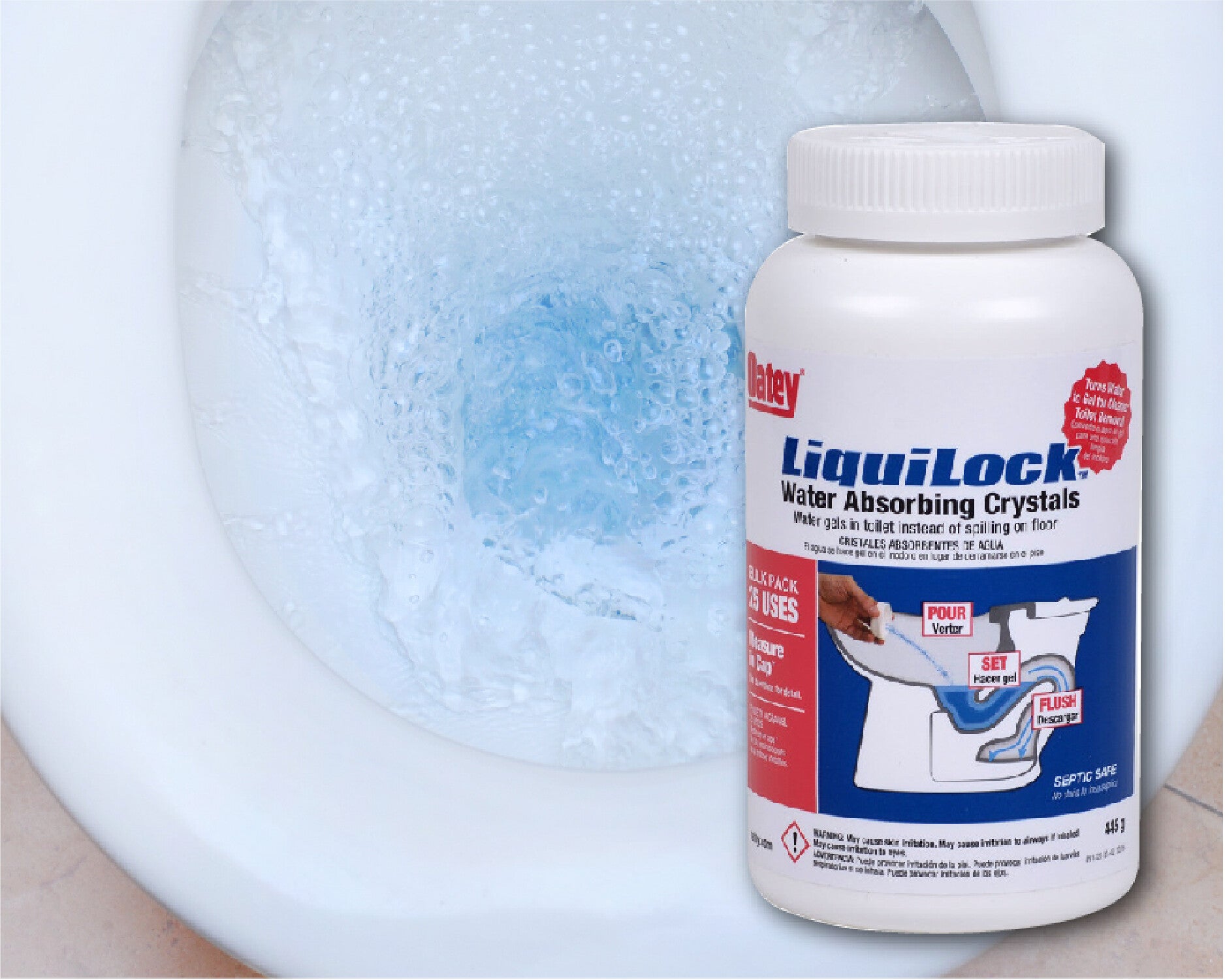A leaking or unstable toilet isn't just annoying and inconvenient—it can lead to costly water damage and structural issues. While most homeowners focus on seals or the toilet itself, the small yet essential toilet bolts often fly under the radar. These bolts secure your toilet to the floor flange and are vital to maintaining bathroom safety and efficiency.
Neglecting these bolts when they become damaged or worn may compromise the toilet seal, cause leaks, or even result in a wobbly bowl, pointing to larger plumbing concerns.
Wondering if it’s time to replace yours? Below, we’ll outline what toilet bolts are and how to spot issues.

Why Toilet Bolts Matter for Toilet Repair
Toilet bolts are essential hardware that anchor your toilet securely to the floor flange. These bolts maintain a watertight seal between the base of the toilet and the drainpipe, ensuring a leak-free and stable installation.
Most toilet bolts are made of metal, though plastic options are available to avoid corrosion. While often overlooked, replacing toilet bolts when needed is a key part of proper toilet repair and home maintenance.
Toilet bolts also rely on a toilet seal—either a traditional wax ring or a reusable non-wax gasket—to prevent leaks. Both work with the bolts to ensure a secure, watertight connection.

5 Signs You Need to Replace Toilet Bolts
Replacing toilet bolts may not be part of your regular DIY routine, but these signs indicate it’s time to act.
1. Visible Rust or Corrosion on Toilet Bolts
Rusty bolts are one of the clearest signs you need a replacement. Water exposure and humidity can corrode metal bolts, weakening their hold and threatening the toilet’s stability. Discoloration or flaking metal means it's time to replace them—before they fail completely.
2. Leaks Around the Toilet Base
Water pooling at the base of the toilet is often due to loose or damaged bolts. This can compromise the wax ring or rubber gasket and lead to a leaking toilet. Left unaddressed, these leaks can cause structural damage, especially in multi-story homes.
To learn how to fix a leaking toilet, click here.
3. Wobbly or Unstable Toilet Bowl
A rocking toilet often means the bolts are loose, broken, or improperly installed. While a quick tightening may solve the issue, repeated movement could point to a damaged flange—a more serious problem that must be fixed before new bolts are installed.
4. Cracked or Worn Bolt Heads
Inspect the bolt heads at the toilet’s base. Cracks, dents, or stripped threads are signs they’re compromised. Damaged bolt heads not only look bad—they can also lead to a weak connection and an unstable toilet.
5. Old Age and Regular Use
Even if your bolts look okay, long-term use can wear them down. If you're already doing a toilet repair or bathroom remodel, it's a good time to upgrade your bolts to ensure continued performance.

What You Need to Replace Toilet Bolts
Swapping out toilet bolts is easier than it sounds. Gather the right tools and materials, and follow a few basic steps.
Tools
- Wrench or socket set
- Utility knife
- Putty knife
- Level
- Screwdriver
- Sponge or Oatey® Liquilock™ Water Absorbing Crystals for water control
Materials
- New toilet bolts – e.g., Hercules® Johni-Bolt® or Johni-Bolt® XL
- Wax ring or non-wax gasket
- Toilet shims (optional, for leveling)
Need help with installation? Check out this guide on how to replace, repair, and reattach your toilet.

Toilet Repair Tips: Extend the Life of Your Toilet Bolts
- Maintaining toilet bolts helps avoid frequent replacements and leaks. Here are a few preventative care tips:
- During regular cleaning, check for toilet wobble or signs of a leak.
- Inspect toilet bolt heads annually for rust or wear.
- Be cautious not to overtighten bolts when cleaning or adjusting, as it can damage the toilet flange.
Final Thoughts: Don't Overlook the Bolts
Toilet bolts may be small, but they play a big role in preventing leaks and keeping your toilet stable. Replacing worn bolts is a quick, affordable fix that helps you avoid major plumbing repairs later on.
For more toilet repair tips and trusted tools, explore Oatey’s full range of plumbing products and resources.
FAQs
1. How often should I replace my toilet bolts?
Toilet bolts don't have a specific lifespan, but it's advisable to inspect them annually for signs of wear, rust, or corrosion. If any damage is detected, replacing them promptly can prevent leaks and maintain toilet stability.
2. Can I replace toilet bolts without removing the entire toilet?
Yes, it's possible to replace certain toilet bolts, such as those securing the tank to the bowl, without removing the entire toilet. However, replacing the bolts that anchor the toilet to the floor typically requires removing the toilet. Always ensure the water supply is turned off and the area is dry before attempting any repairs.
3. What causes toilet bolts to rust, and how can I prevent it?
Toilet bolts can rust due to prolonged exposure to moisture and humid environments. To prevent rusting, use bolts made of corrosion-resistant materials like brass or stainless steel, ensure proper installation to avoid water seepage, and apply protective coatings if necessary.
4. Why is my toilet wobbly, and can tightening the bolts fix it?
A wobbly toilet can result from loose or damaged bolts, an uneven floor, or a compromised flange. Tightening the bolts may resolve the issue, but be cautious not to overtighten, as this can crack the porcelain. If tightening doesn't help, further inspection may be needed to identify underlying problems.
5. Are there different sizes of toilet bolts, and how do I choose the right one?
Yes, toilet bolts come in various sizes. It's essential to select bolts that match your toilet's design and the flange specifications. Consult your toilet's manufacturer guidelines or seek advice from a professional to ensure proper fit and function.
Regular maintenance and timely replacement of toilet bolts are crucial for the proper functioning and longevity of your toilet.